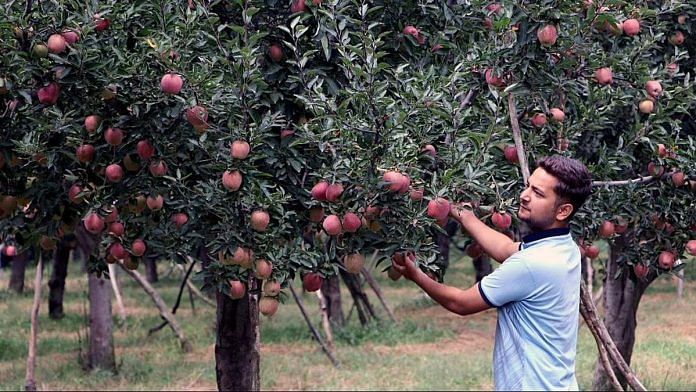New Delhi: A group of scientists from Delhi University claims to have found colonies of drug-resistant fungus Candida auris on the surfaces of stored apples in India. Candida auris is a superbug that is recognised as a global health threat and is notorious for lurking in hospital settings.
The fungus — which can be deadly for patients in ICU — may contaminate fruit surfaces because of the various preservation practices aimed at preventing spoilage and extending shelf life, the researchers said in a study published in the journal mBio on 31 March.
The researchers did not find the fungus on the surfaces of fresh apples.
The team noted in the study that, to prevent spoilage, apples and several other fruits are treated with fungicides. However, this practice can select strains of C. auris that are resistant to a broad range of fungicides.
Simply put, ‘selection’ is the evolutionary change by which every organism continuously undergoes genetic mutations. Every mutation that is beneficial for its survival will get passed on to the next generation and a mutation that makes the organism weak is wiped out.
In this case, when a fungicide is overused, all strains of C. auris will get wiped out except for those strains that develop a mutation that makes them resistant to the fungicide. As a result, while all other strains get killed, these drug-resistant strains continue to propagate.
Previous studies have examined the effect of fungicides on the human pathogen [that causes disease in humans] Aspergillus fumigatus, Anuradha Chowdhary, a mycologist at the University of Delhi, told ThePrint.
But the new work focuses on drug-resistant strains of Candida auris — a pathogenic yeast that spreads quickly in hospitals and has been isolated from nature, she said. Fungicides used in agriculture may inadvertently select the drug-resistant fungi, Chowdhary said.
While the new findings appear to suggest that apples could be involved in the transmission of C. auris, Chowdhary clarified that the average consumer does not need to worry about getting infected with C. auris by eating apples.
“C. auris does not spread by ingestion. It causes bloodstream infections in immunocompromised patients who are admitted in the intensive care units and have invasive devices,” she said.
Although she said the study has no implications on the transmission of the fungus to consumers, it remains important to know how fungi like these spread, and how they reach hospital settings where patients are more vulnerable to it.
Also read: As Omicron variant XE surfaces in India, here’s what you need to know about the Covid strain
Study method
The team screened the surfaces of 84 fruits, representing nine different tree fruit types, for C. auris and other yeasts.
The fruits were collected in 2020 and 2021 from areas of northern India and included 62 apples — 20 picked from orchards and 42 purchased from a market in Delhi. The team found that each fruit species hosted at least one type of yeast.
The team changed their focus to apples on finding C. auris on them.
The team used whole-genome sequencing to identify 16 distinct colonies. They found drug-resistant strains of C. auris on a total of eight apples — five of the ‘Red Delicious’, and three of the ‘Royal Gala’ variety.
All eight of these apples were stored before purchase. The other apples had other kinds of fungi on them, but those were not the focus of this study. None of the freshly-picked apples hosted C. auris.
C. auris was first identified in 2009 in Japan, and, since then, researchers have been investigating how the pathogen originates and spreads.
“We still don’t really understand the forces that drive the simultaneous emergence of multiple distinct genetic clusters of C. auris,” Jianping Xu of McMaster University in Ontario, who co-led the study, said in a statement.
The same team was the first to isolate C. auris from a natural environment — the marshes and the sandy beaches of a natural coastal ecosystem in the Andamans.
(Edited by Uttara Ramaswamy)
Also read: DNA-based, needle-free Covid vaccine ZyCoV-D 67% effective in Phase 3 trial, Lancet study finds






